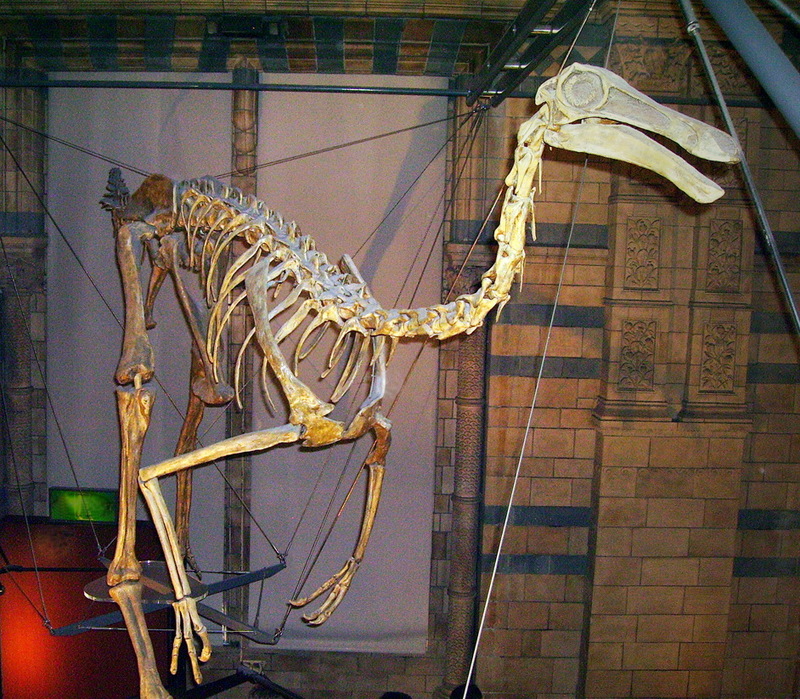Gallimimus
From Wikipedia, the free encyclopedia
[Photo] Gallimimus bullatus at the Natural History Museum, London. Photgraph by User:Ballista http://en.wikipedia.org/wiki/User:Ballista
Gallimimus (gal-ih-MY-mus) , meaning 'fowl mimic', is a genus of ornithomimosaurid dinosaur from the late Cretaceous Period (Maastrichtian stage) Nemegt Formation of Mongolia. With a maximum length of 4 to 6 meters (13-20 feet) and weighing as much as 440 kilograms (970 pounds), it was one of the largest ornithomimosaurs. Gallimimus is known from multiple individuals, ranging from juvenile (about 0.5 metres tall at the hip) to adult (about 2 metres tall at the hip).
The fossil remains of this dinosaur were discovered in the early 1970s in the Gobi Desert of Mongolia. In 1972, it was named by paleontologists Rinchen Barsbold, Halszka Osm??lska, and Ewa Roniewicz. The only known species is Gallimimus bullatus. A supposed second species, "Gallimimus mongoliensis", has never been formally referred to this genus. A recent reanalysis of the nearly complete skeleton of Gallimimus mongoliensis concluded that it is not a species of Gallimimus but may represent a new, currently unnamed ornithomimid genus (Kobayashi & Barsbold, 2006).
Gallimimus was rather ostrich-like, with a small head, large eyes, a long neck, short arms, long legs, and a long tail. A diagnostic character of Gallimimus is a distinctly short 'hand' relative to the humerus length, when compared to other ornithomimids. The tail was used as a counter-balance. The eyes were located on the sides of its head, meaning that it did not possess binocular vision. Like most modern birds, it had hollow bones. Gallimimus had a number of adaptations which suggest good running ability, such as long limbs, a long tibia and metatarsus and short toes but it is unknown how fast it could run.
A fossilized beak is present in one Gallimimus skull and ridges on the beak have been interpreted as part of a duck-like filter-feeding mechanism. However, similar ridges are seen in herbivorous sea turtles and ornithomimids were relatively common in seasonally dry environments, where filter-feeding was probably not a viable lifestyle. It seems more probable that Gallimimus was an omnivore, using its beak to crop plants and capture small animals.
In popular culture
Although Gallimimus did not appear before the Cretaceous Period, the dinosaur appeared on-screen, in the motion picture Jurassic Park. A flock of running Gallimimus was seen running across a vast field from a Tyrannosaurus, which hunted and killed one of the ornithomimids. Gallimimus is also featured in the film's first sequel, The Lost World: Jurassic Park, during the 'roundup' sequence.
http://en.wikipedia.org/wiki/Gallimimus
| The text in this page is based on the copyrighted Wikipedia article shown in above URL. It is used under the GNU Free Documentation License. You may redistribute it, verbatim or modified, providing that you comply with the terms of the GFDL. |
|

